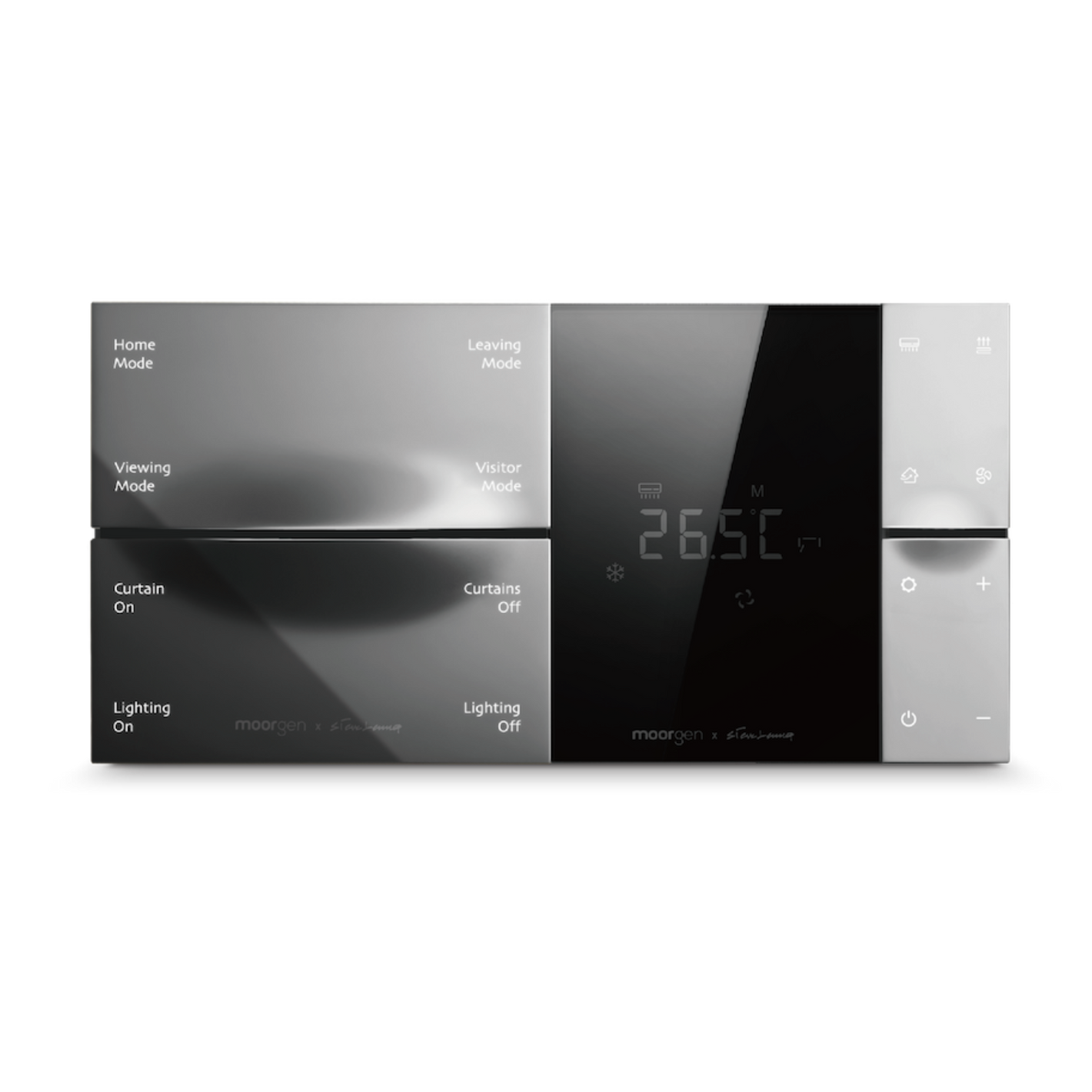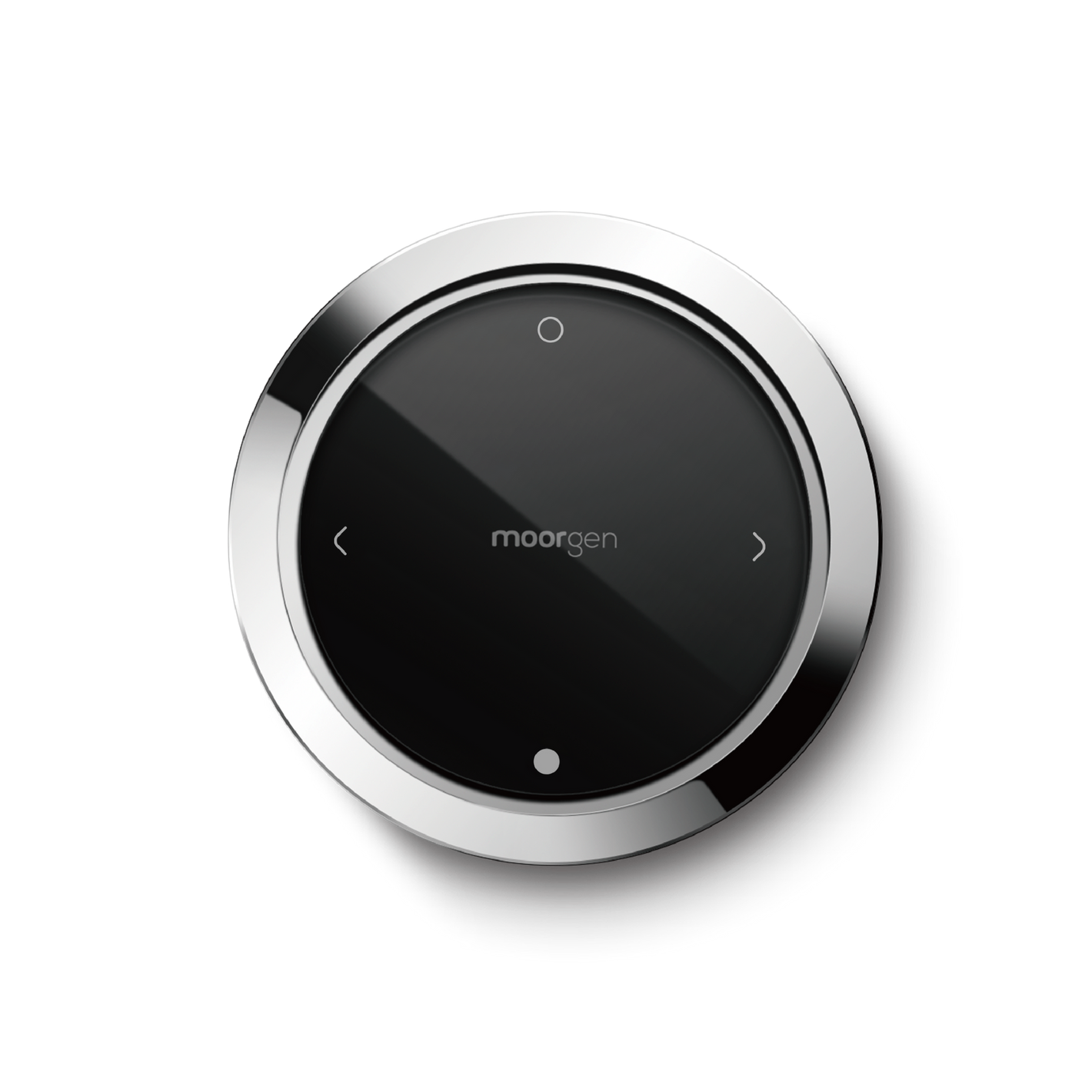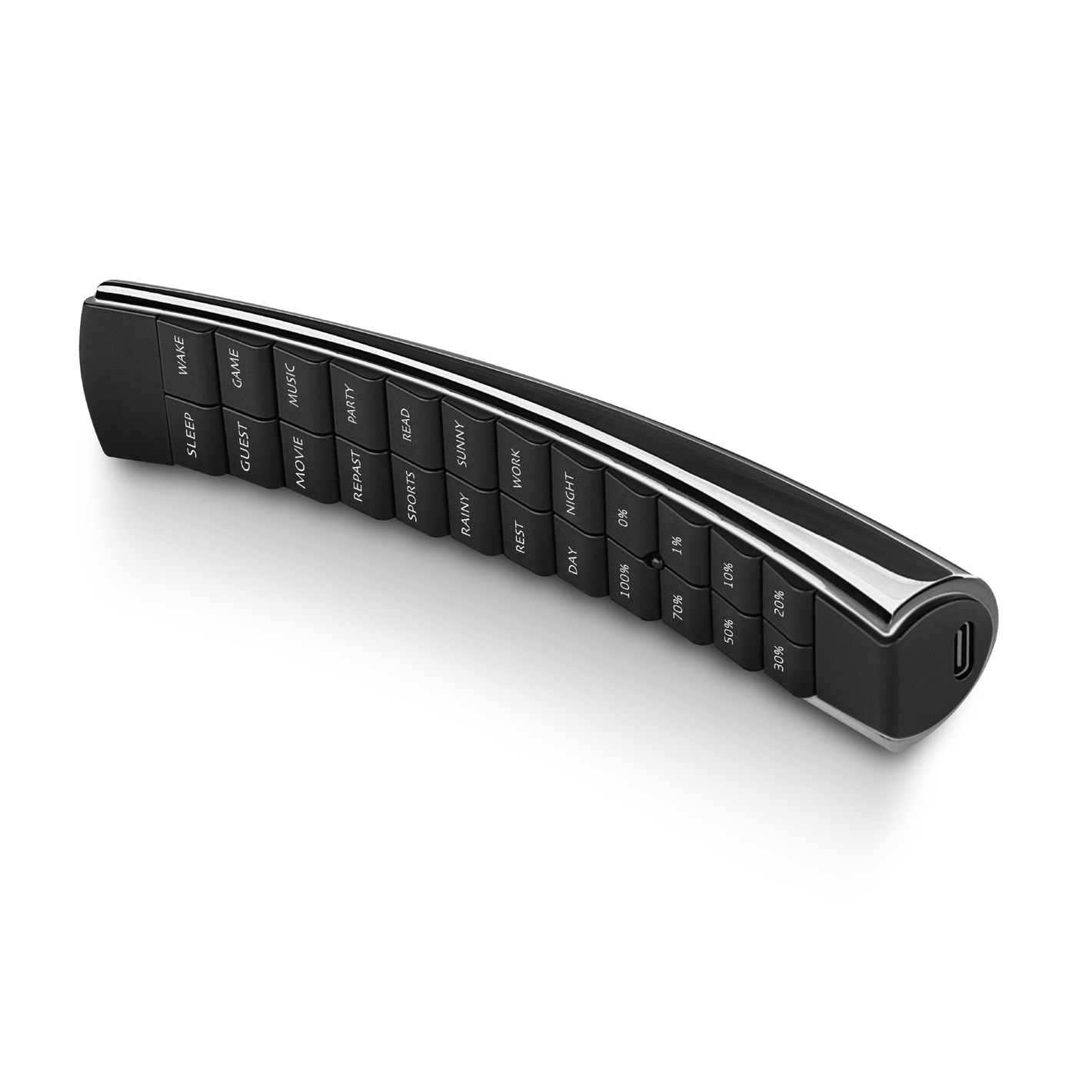【Smart Digital Door Lock】Which Batteries Should You Choose? How Long is Their Lifespan?
Everyone knows that smart digital door locks require batteries to operate. Most people don't take the time to understand how to choose the right batteries for their smart digital door locks or how to properly maintain them. And of course, salespersons at retail stores won't proactively tell you either, as it creates more business opportunities if your smart electronic devices are damaged due to battery leakage… (not a surprise!)
Choosing the "right" batteries not only reduces the frequency of battery replacement and saves costs but also protects your smart digital door lock from damage caused by battery leakage, which can harm internal electronic components, circuit boards, or battery compartments, thus extending the lifespan of your smart digital door lock!
What are carbon-zinc batteries, alkaline batteries, and rechargeable batteries? How should you choose? What are the differences in voltage and current output? Why do some batteries drain quickly after being replaced? How can you select the appropriate batteries for your smart digital door lock at home? This Moorgenzine article will provide you with the explanations.
Key highlights of this article:
- Smart Digital Door Lock - What are the ways of power supply?
- What are the types of battery cells? How do you differentiate between battery cells?
- Smart Digital Door Lock - What Battery Cells Should You Use? How Many Do You Need?
- How to Pick Alkaline Batteries?
- Smart Digital Door Lock - When to Replace Batteries? How Long Do They Last?
- Smart Digital Door Lock - What to Do If It Unfortunately “No Batteries”?
Smart Digital Door Lock - What Are the Ways of Power Supply?
Like other smart home products, smart digital door locks are primarily powered through three methods - batteries/cells, lithium battery charging, or AC power. However, it is important to note that smart digital door locks require internal physical structures (lock cores) to operate the lock, which consumes a certain amount of power. Furthermore, modern smart digital door locks offer increasingly more features, including up to 6 unlocking modes such as fingerprint, vein recognition, and facial recognition, as well as various anti-theft functions like real-time camera monitoring and instant communication capabilities, which can result in higher power consumption. Therefore, when understanding the power supply methods of smart digital door locks, it is also beneficial to consider the voltage, advantages, and disadvantages offered by different power supply methods.
What Are the Types of Battery Cells? How Do You Differentiate Between Battery Cells?
Generally, batteries can be categorized into three common types: carbon-zinc batteries, alkaline batteries, and rechargeable batteries:
-
Carbon-zinc batteries
Average voltage: approximately 1.5V, suitable for low-power applications
Price: low-cost
Battery life: disposable
Recommended use: products with low voltage requirements, low power consumption, and short usage duration, such as TV remotes, air conditioner remotes, toys, alarm clocks, etc.
Advantages: Carbon-zinc batteries are inexpensive and widely available.
Disadvantages: During use, the voltage of carbon-zinc batteries drops quickly, and they have a shorter lifespan. They are prone to electrolyte leakage because the negative terminal of carbon-zinc batteries, zinc, extends to the outer casing of the battery. During use, it gets oxidized into zinc ions, gradually thinning the outer shell and causing electrolyte leakage, resulting in a sticky surface. Even unused batteries left aside can still undergo a chemical reaction between the electrolyte and the zinc in the carbon-zinc battery, causing the outer shell to thin. The shelf life is typically only about one and a half years.
Common brands of carbon-zinc batteries: Panasonic, Toshiba, Sony, etc.
-
Alkaline batteries
Average voltage: approximately 1.5V - 1.7V
Price: mid-range
Battery life: disposable (although they belong to the secondary battery category, they are not designed for recharging)
Recommended use: products with high voltage requirements, higher power output, and long usage duration, such as electric shavers, wireless mice, remote-controlled toy cars, etc., which are driven by motors.
Advantages: Alkaline batteries are readily available, and their voltage drops slower during use, resulting in longer battery life.
Disadvantages: Alkaline batteries have higher reactivity and are more prone to self-discharge. The electrolyte in alkaline batteries is alkaline potassium hydroxide, which is corrosive. Although alkaline batteries are less likely to leak electrolyte compared to carbon-zinc batteries, they can still pose a risk when stored in high-temperature or humid environments for an extended period.
Common brands of alkaline batteries: Energizer, Duracell, GP, Panasonic, etc.
-
Rechargeable batteries (lead-acid batteries, nickel-metal hydride batteries, nickel-cadmium batteries, lithium batteries, etc.)
Average voltage: approximately 1.2V - 1.4V
Price: high-cost
Battery life: rechargeable (can be reused after discharging and recharging)
Recommended use: products with medium voltage requirements, higher power consumption such as sound or light-emitting devices, digital cameras, various portable devices and tools, etc.
Advantages: Rechargeable batteries are less prone to electrolyte leakage compared to regular batteries.
Disadvantages: Rechargeable batteries have a relatively higher initial cost compared to carbon-zinc and alkaline batteries. They require specific 1A/5V (5W) chargers and using other fast chargers can damage the rechargeable batteries. The price of rechargeable batteries is about 8-10 times higher than disposable batteries, and certain types like lithium-ion batteries have a higher self-discharge rate. Even when stored in a room temperature environment of 25℃ under fully charged conditions, they can lose about 20% of their total capacity every three months. The voltage of rechargeable batteries is relatively less stable.
Common brands of rechargeable batteries: MAHA-POWEREX, Sanyo Eneloop, Sony, GP, etc.
Special Note:
In recent years, the use of batteries in products like smart digital door locks has become increasingly common. With the expansion of the electronics market, the demand for batteries has risen, leading manufacturers to produce different types of batteries. Currently, battery monitoring is not yet comprehensive, and some batteries contain excessive mercury, which exceeds the standards set by the European Union and can pose risks to human health. To safeguard your well-being and the lifespan of electronic products in your home, it is recommended to consider not only the brand but also user reviews and battery specifications before making a purchase decision.
Smart Digital Door Lock - What Battery Cells Should You Use? How Many Do You Need?
Most smart digital door locks use AA batteries, and the number of batteries required depends on the power needs of the lock brand and its functionalities. Generally, it would be around 4 to 8 AA batteries (International size 3).
Since smart digital door locks require a higher voltage to operate the lock mechanism, among carbon-zinc batteries, alkaline batteries, and rechargeable batteries, alkaline batteries provide the highest voltage. Alkaline batteries also have higher electrode material utilization, resulting in approximately 3 to 6 times more capacity compared to carbon-zinc batteries. Therefore, alkaline batteries are the most suitable for smart digital door locks.
In addition to voltage and capacity considerations, carbon-zinc batteries have the risk of leaking electrolyte over time due to the use of zinc as the negative electrode material, and the battery casing itself is zinc-made, which becomes thinner with prolonged usage.
Apart from the potential electrolyte leakage, voltage instability is the biggest issue with rechargeable batteries. There is a chance of sudden power depletion without warning or a "false empty" situation, rendering the smart digital door lock inoperable.
Most smart electronic lock brands recommend using alkaline batteries. If non-recommended batteries are used, resulting in damage to the lock, it may be considered as user-induced damage and might not be covered under warranty.
How to Pick Alkaline Batteries?
There are some considerations when purchasing alkaline batteries, not only for use in smart digital door locks but also for other electronic devices that require batteries. You can refer to the following suggestions:
-
Freshness of Alkaline Batteries: When selecting batteries, try to choose a newer batch. Although batteries have a long shelf life of several years, they will still experience degradation and voltage weakening over time. Therefore, fresher batteries are preferable.
-
Choosing Alkaline Batteries from the Same Period: If the production dates of alkaline batteries differ, but the quantity of the latest batch is insufficient, it is recommended to choose batteries from the same production period to ensure similar voltage levels among each battery and avoid overloading a few batteries.
-
Selecting Alkaline Batteries from the Same Brand: It is also advisable to choose batteries from the same brand. While different brands may have similar designs, the actual voltage can vary, with generic brands often having lower voltage. When using different brands of batteries simultaneously, the ones with lower voltage may bear a higher load, leading to faster depletion and potential electrolyte leakage.
-
Opting for Leak-Proof Alkaline Batteries: Some international brands now produce alkaline batteries with a "leak-proof" manufacturing method. When purchasing batteries, you can consider selecting the most reliable option based on the product description.
- Choosing Batteries Included in the Package: When purchasing a smart digital door lock, it usually comes with batteries as part of the package to facilitate immediate use. Since the lock brand selects and includes these specific batteries, it indicates their suitability for the smart digital door lock. Using the same brand and model of batteries provided not only ensures consistent voltage but also serves as evidence against user-induced damage if the lock malfunctions.
Smart Digital Door Lock - When to Replace Batteries? How Long Do They Last?
Smart digital door locks typically require 4 to 8 AA batteries (International size 3). Calculating based on a frequency of 10 door openings and closings per day, a set of 8 batteries can last around 10 months to 1 year, while a set of 4 batteries generally lasts 6 to 8 months. However, the battery usage time can be affected by factors such as increased frequency of usage and additional unlocking methods like fingerprint recognition or facial recognition.
If you want to know how to make your smart digital door lock more durable, you can refer to the article "10 Key Tips for Maintaining a Smart Digital Door Lock!"
So, when does a smart digital door lock need battery replacement? In fact, when the batteries are running low, the smart digital door lock will emit an alert sound or voice prompt every time you use it until the batteries are replaced. Most smart digital door locks also provide a certain period of time to notify you when battery replacement is needed. It is not recommended to use rechargeable batteries because they have unstable voltage and may suddenly run out of power, preventing the lock from giving you a reminder.
Smart Digital Door Lock - What to Do If It Unfortunately “No Batteries”?
If your smart digital door lock runs out of power and you are outside, there are solutions available. First, most smart digital door locks come with backup keys, which you can use to unlock the door when the lock has no power.
Alternatively, if you have lost the backup keys or they are unfortunately inside the house, you can temporarily power the smart digital door lock using a USB cable with an external charger or a 9V square battery. Then, you can use your pre-set unlocking method such as facial recognition, password, or fingerprint recognition to unlock the door.
If your smart digital door lock runs out of power, you can find more detailed solutions in the article "4 Rescue Methods for Smart Digital Door Locks That Have Run Out of Power."
After reading this Moorgenzine article, you should have a better understanding of the batteries used in smart digital door locks. If you have any questions about smart locks or batteries, feel free to contact Moorgen for further assistance. Additionally, if you want to experience the lifestyle enhancement brought by smart door locks firsthand, you can visit Moorgen's showroom located in North Point, Hong Kong, and experience Real Smart Home.
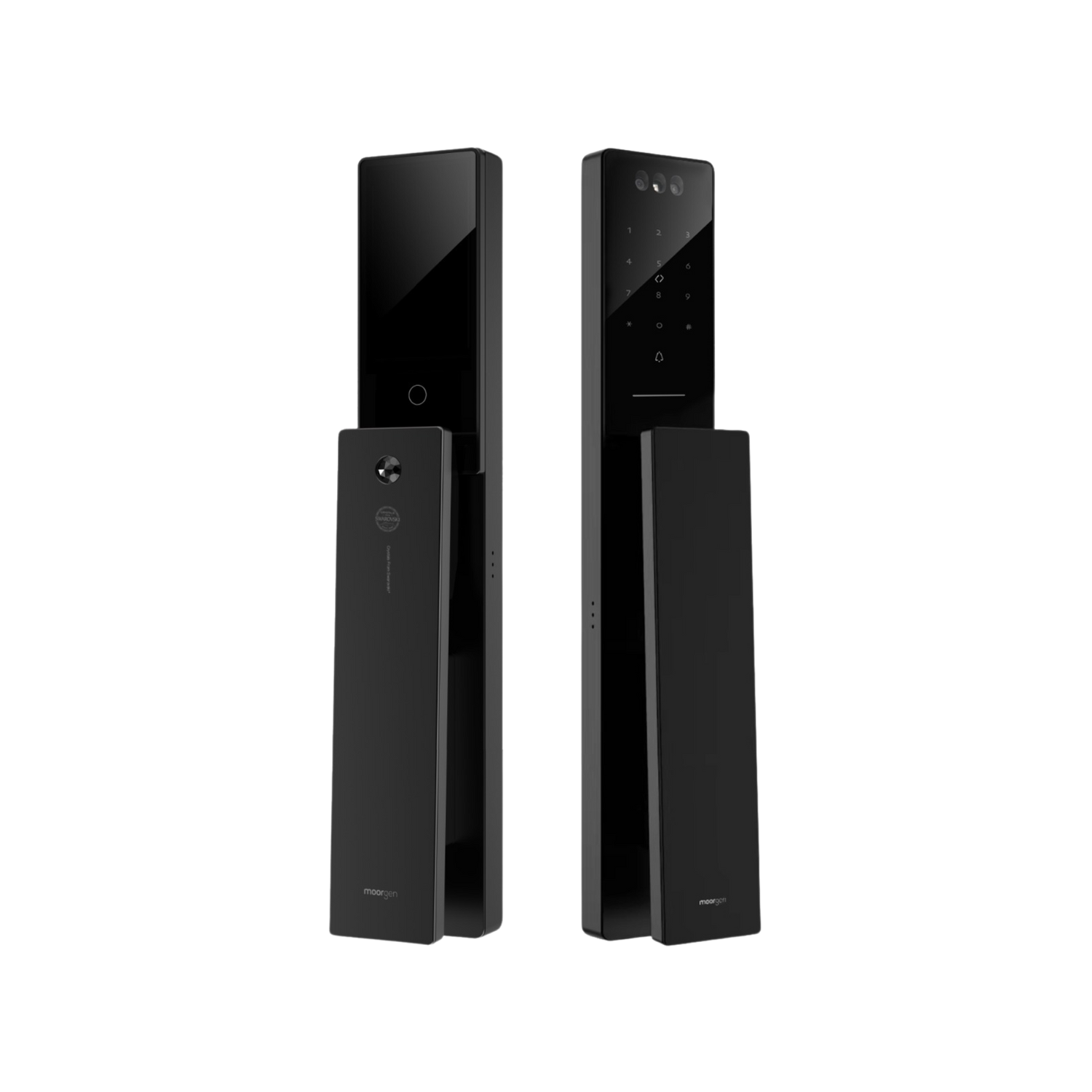


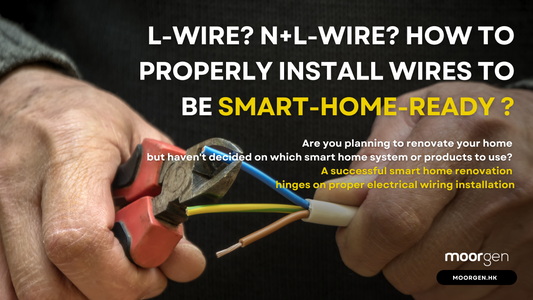

![[Smart Living] How to Choose a Smart Power Strip? Swift Transform Your Home into a Smart Home!](http://moorgen.hk/cdn/shop/articles/blog_cover_moorgen_how_to_choose_smart_power_strip.png?v=1728137093&width=533)
![[Smart Living] How to Choose LED Bulbs? Which Ones Are the Most Energy-Efficient?](http://moorgen.hk/cdn/shop/articles/blog_cover_moorgen_how_to_choose_led_bulbs.png?v=1728136975&width=533)
![[Smart Living] How to Choose an Instant Hot Water Dispenser and Use It Efficiently?](http://moorgen.hk/cdn/shop/articles/blog_cover_moorgen_how_to_choose_instant_hot_water_dispenser.png?v=1728136837&width=533)
![[Smart Living] 5 Energy-Saving Tips for Electric Kettles](http://moorgen.hk/cdn/shop/articles/blog_cover_moorgen_energy_saving_tips_electric_kettles.png?v=1728136710&width=533)
